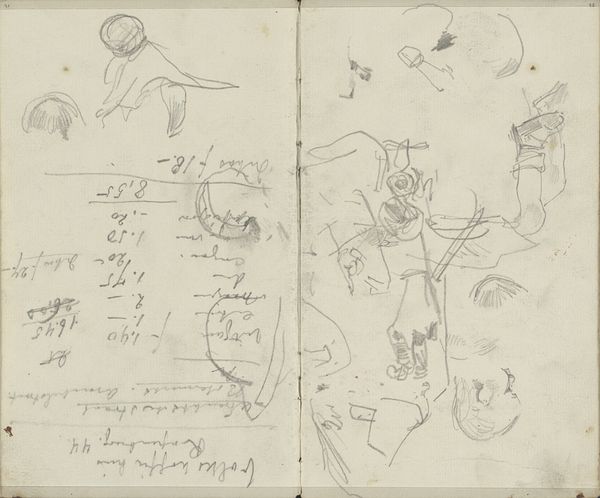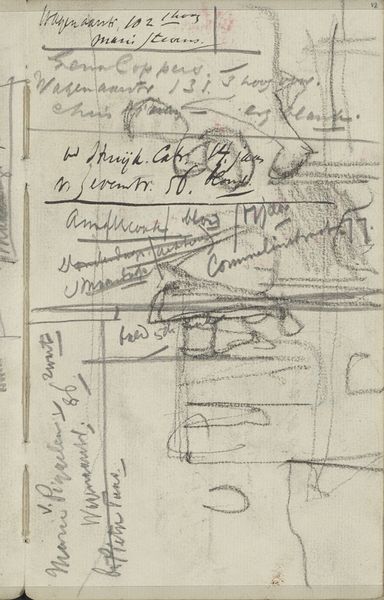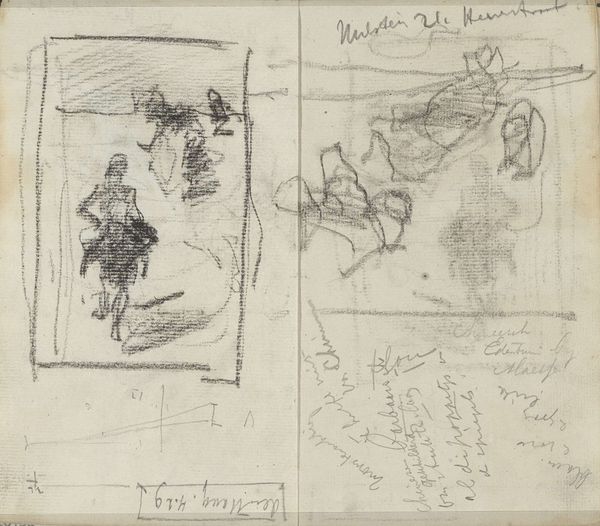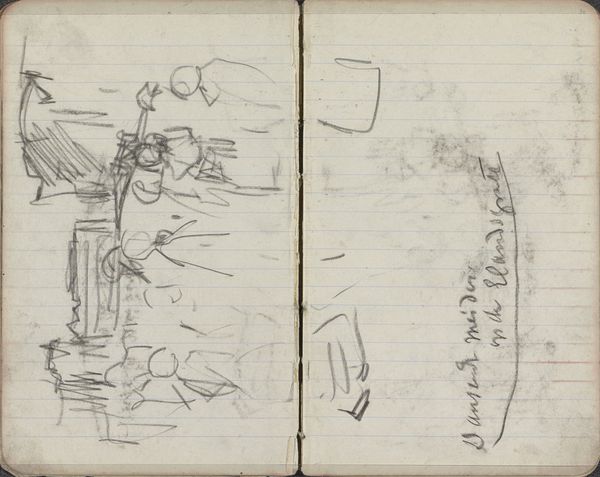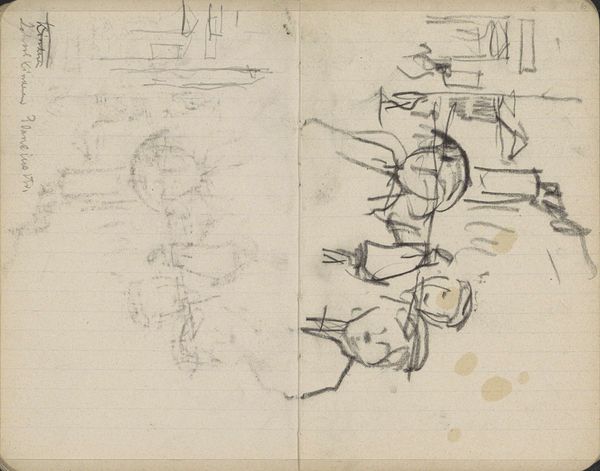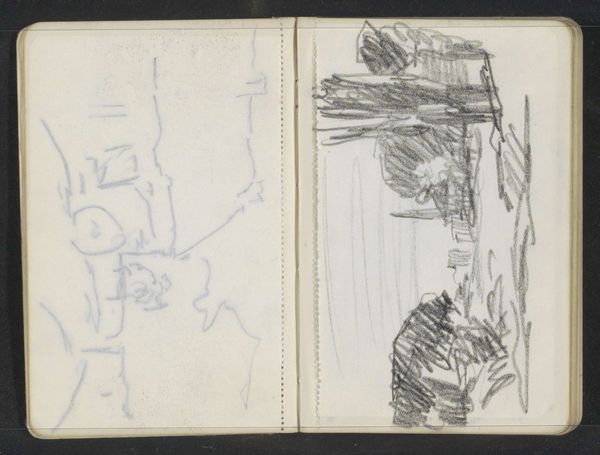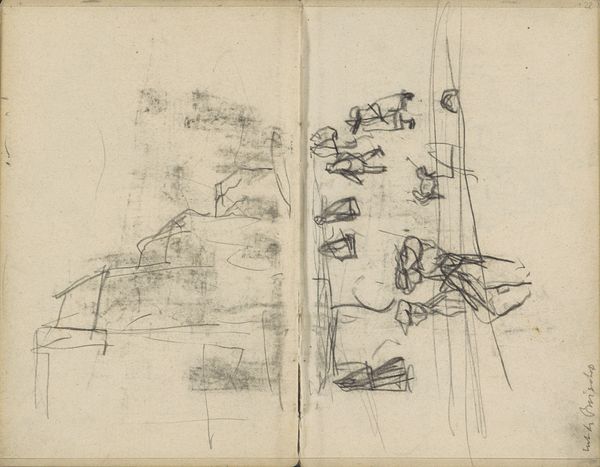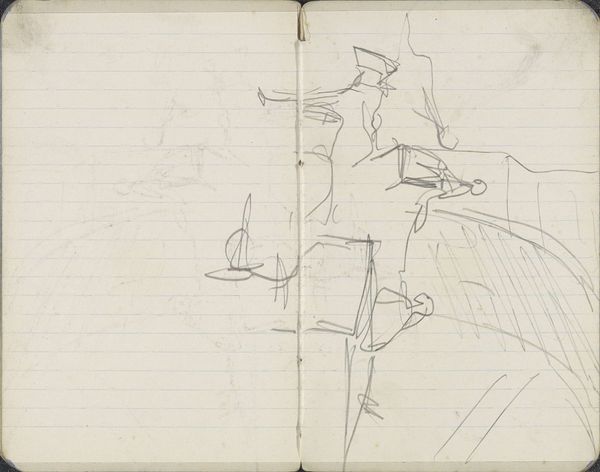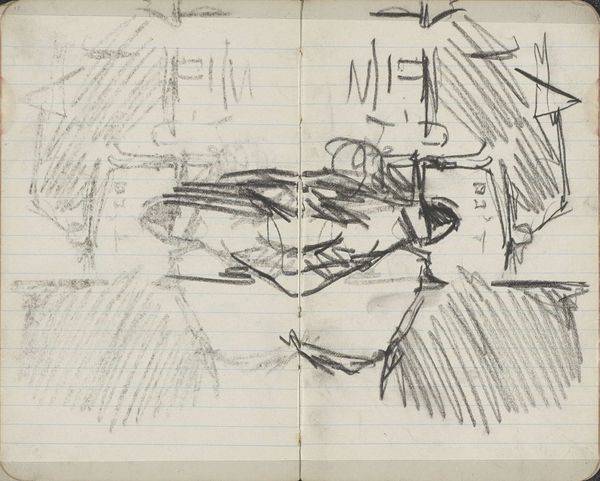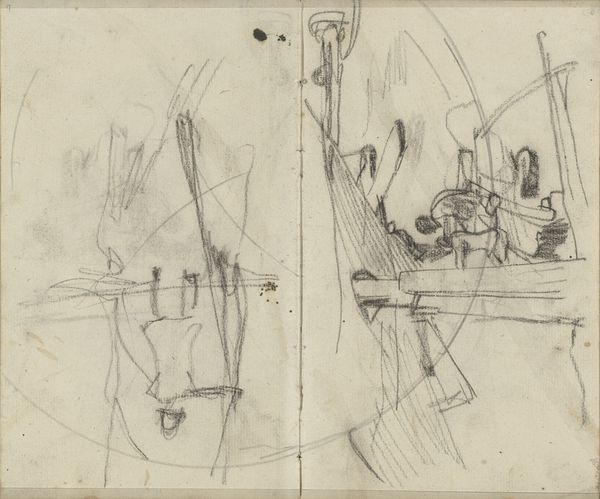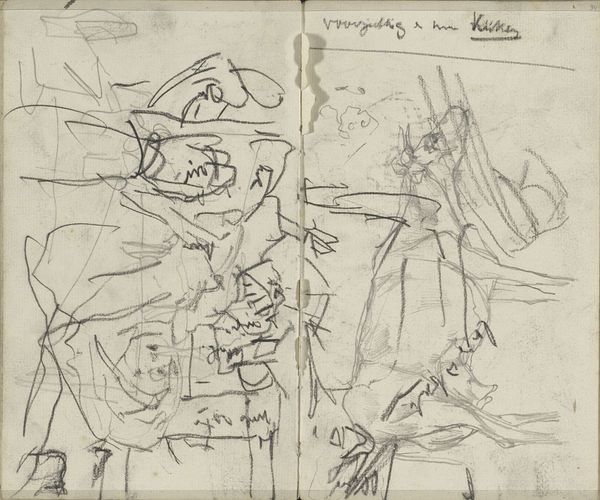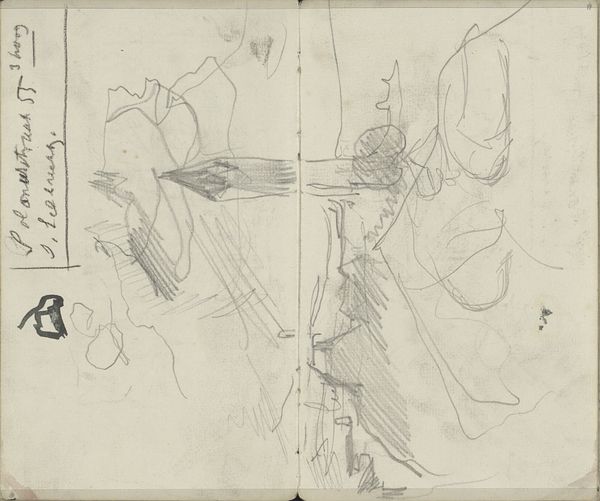
drawing, paper, pencil
#
portrait
#
drawing
#
dutch-golden-age
#
impressionism
#
landscape
#
figuration
#
paper
#
pencil
Copyright: Rijks Museum: Open Domain
Curator: This intriguing page of studies, rendered in pencil on paper, is entitled "Figuurstudies en een koe," which translates to "Figure Studies and a Cow." George Hendrik Breitner created it between 1887 and 1889, and it resides here at the Rijksmuseum. Editor: My first thought is ‘energy.’ The pencil lines are so active and fleeting. It feels like a glimpse into the artist's working process, a raw and unfiltered look at his observations. The way these disparate sketches crowd together speaks to how observation and memory can become almost like raw materials. Curator: Yes, exactly! Breitner's hand captures the transient nature of urban life and the more bucolic imagery in a singular space, offering, I think, insight into his artistic perception. The combination of figure studies with an animal subject reflects a consciousness attuned to both humanity and nature—a theme woven throughout art history. How do you perceive the symbolic relationship in this work between people, and livestock? Editor: Interesting question, but I’m not so sure symbolic readings are really at the heart of it. I think it's really just about the practicality of his artistic practice. Breitner, from my perspective, used this paper as a direct means to a specific end. Each sketch isn't weighed down with meaning. They are just observations to be deployed later perhaps. He likely recorded whatever was around him using readily available materials, paper and pencil, like a visual record to mine later. That is why there are so many subjects within it, even the written notes, maybe shopping lists, directions, things to remind himself about his world. Curator: But don't you think the recurring motif of figures conveys a deeper meditation on the human condition within the context of its environment, that it’s more than simply pragmatic and immediate? The arrangement—the positioning of the cow in relation to the figures—begs interpretation. The lines, hasty as they may seem, serve as a conduit between what he saw and what he felt about the urban and rural life surrounding him. They allow memory to flow from his perceptions to us. Editor: Well, while I concede to the evocative nature of it all and recognize the presence of narrative suggestions, for me, the charm is less in symbolic intention and more with his process. It reveals the artist at work with their material conditions plainly presented to us, that the drawings can coexist with notes about errands speaks to a total immersion. Curator: A lovely consideration that tempers a solely symbol-laden view of artistic intention! Editor: Absolutely! Thinking about it, it bridges the grand gesture of history painting with the quotidian.
Comments
No comments
Be the first to comment and join the conversation on the ultimate creative platform.
